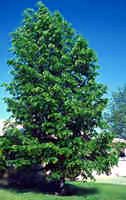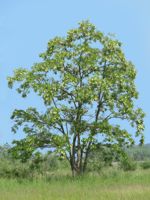Mon-Fri 9am - 5pm Mountain time
Griffin / Brooks #1 Poplar vs Black Locust
Populus x Griffin
Robinia pseudoacacia
NOT AVAILABLE THIS SEASON - MIGHT RETURN
Griffin Poplar is a tall, fast-growing, deciduous tree. One of the oldest prairie hardy varieties developed at the Brooks Research Centre, Griffin Poplar is a great shelterbelt tree. It is adaptable in many soil conditions. Too large for a normal city lot, Griffin Poplar is also ideal for large properties and parks.
Black Locust is an attractive tree. Its distinctive leaves are made of about a dozen bright green leaflets. It also notable for its fragrant white flowers, which smell of citrus.
Black Locust can grow in many situations, but prefers dry areas with lots of sun. It is robust and is an excellent choice for establishing shade in dry, open areas.
Important note: Much of the Black Locust is toxic to humans and livestock, including seeds, bark, and leaves.
Griffin / Brooks #1 Poplar Quick Facts
Black Locust Quick Facts
In row spacing: 2.4 - 3 m (8 - 10 ft)

